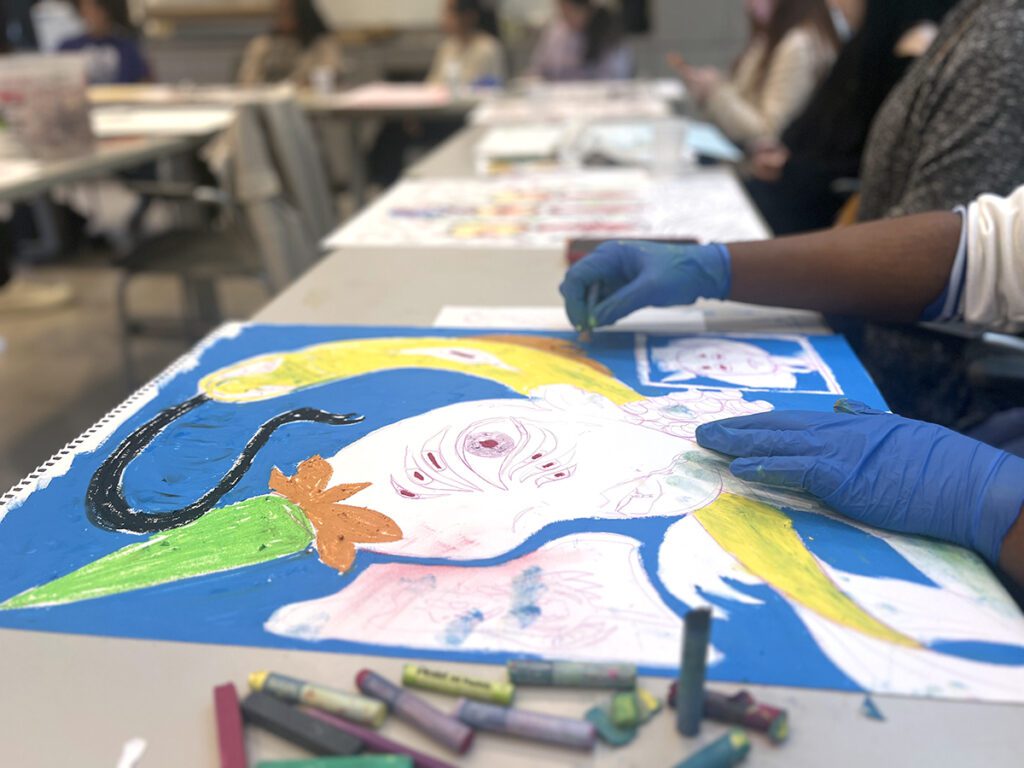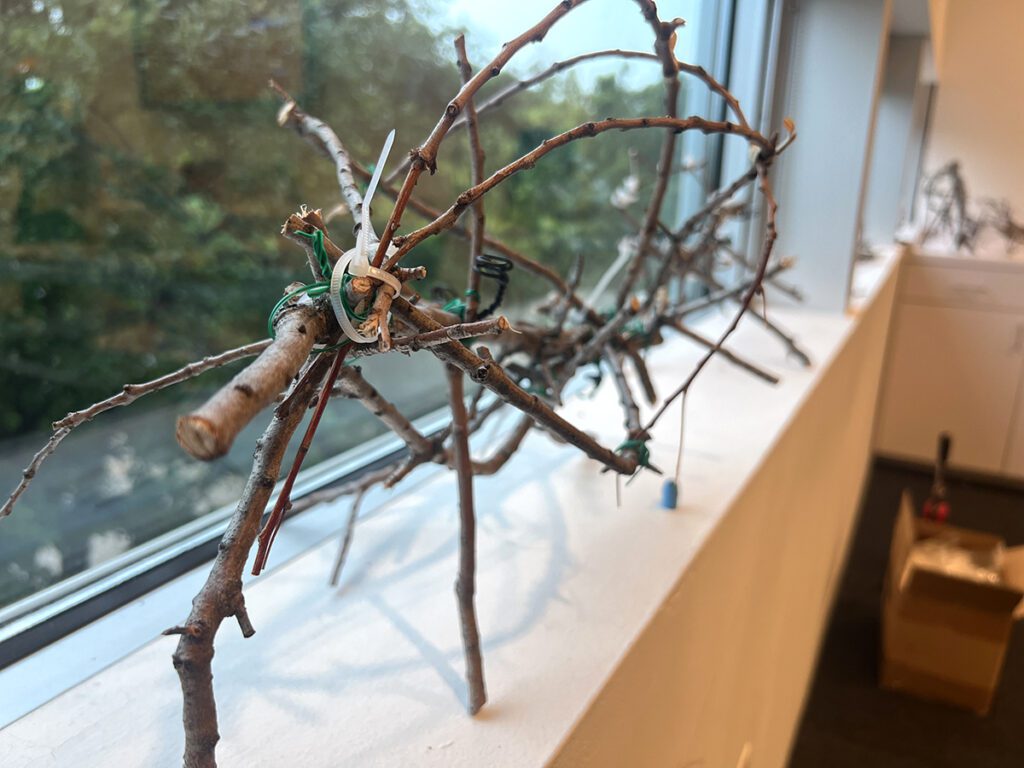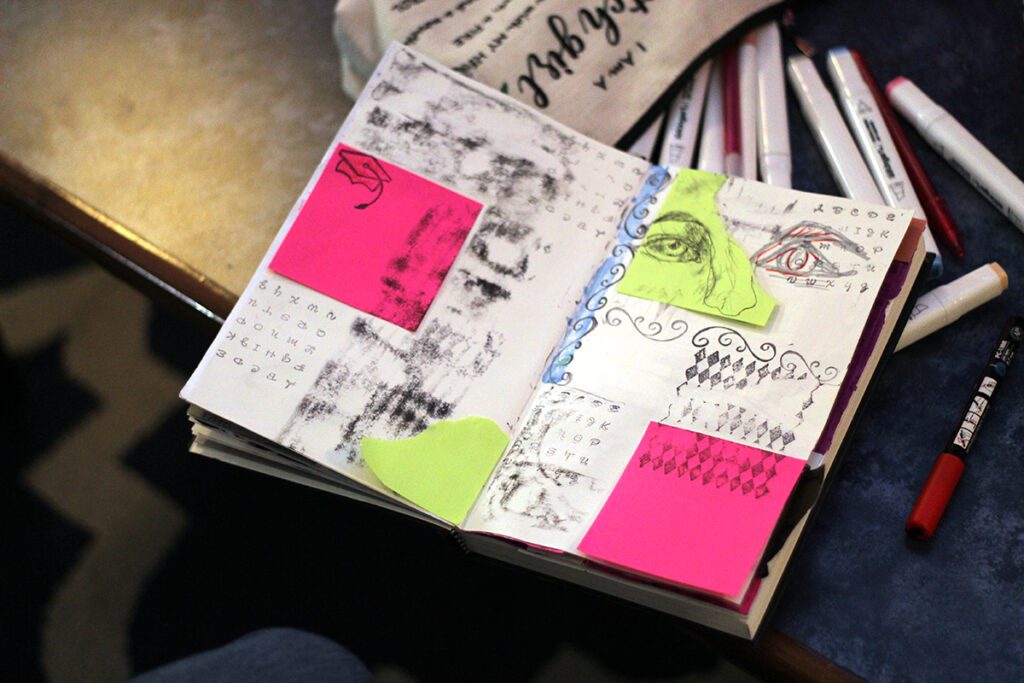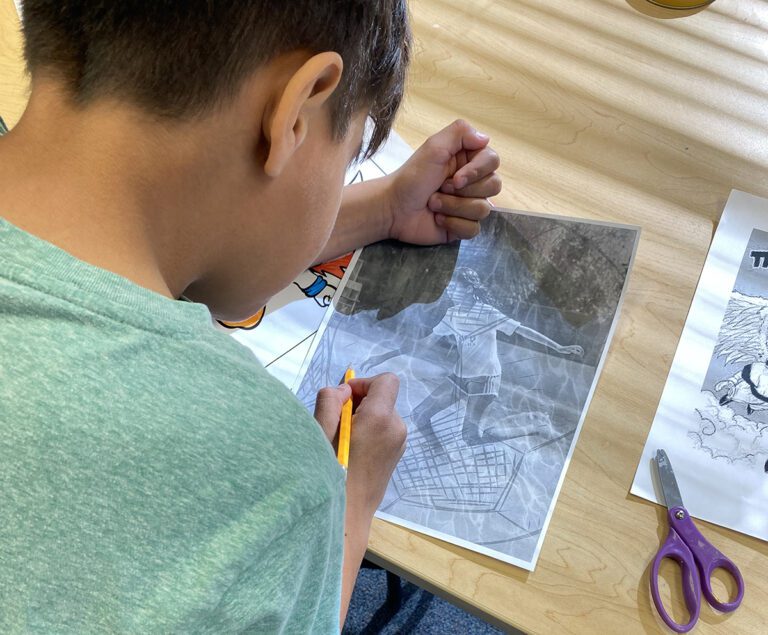When people find out you are an art teacher, you may hear responses like, “You have the coolest job! You just get to make stuff all day!” You probably want to tell them that not only do your students “make stuff,” but they also create one-of-a-kind masterpieces that meet visual arts standards, demonstrate artistic techniques and processes, and showcase their artistic voice–just to name a few. So what’s the difference between “making” and “creating,” and how do both belong in the art room?
First, let’s differentiate between make and create in the K-12 art room:
- Making often involves following specific instructions or a general process to replicate an example. This is usually about techniques, practicing skills, and understanding art fundamentals. Making could look like our students’ first pinch pots in the art room or shading a sphere with a charcoal pencil.
- Creating involves using problem-solving, experimentation, and personal expression to produce an original artwork. In the art room, this could look like students using the pinch pot method to design and construct a narrative vessel or shading the tip of a rounded nose in a Surrealist self-portrait.
Both making and creating are vital in the art room and involve the production of a piece. Students need to learn technical skills and foundations before diving into personal expression. For example, set your students up for success by teaching color theory and facial proportions before diving into a conceptual self-portrait.
Explore how to encourage creativity in the classroom with a shift from making to creating.

How do you get students to shift from simply making to creating?
How many times have you heard, “Is this good enough?” Oftentimes, our students get stuck going through the motions of making art. We find students looking at the rubric to meet the bare minimum for projects or copying ideas from their peers. Let’s break the cycle of mediocrity and guide students toward creating artworks they’re passionate about with the three approaches below.
1. Plan open-ended projects.
Design assignments that allow students to explore and make their own decisions. Provide an overarching theme or concept and some requirements. Then, let students interpret the assignment in their own way. Students love having the independence to make their own choices and the requirements allow you to meet objectives as well as boost creativity. Open-ended projects also discourage students from copying your example or their peers’ work.
2. Promote inquiry-based learning.
Encourage students to ask questions and explore topics on a deeper level. Model this by asking them questions that require them to explain or justify. Good questions can lead to a better understanding of their art and build more meaningful connections. Try the Six Word Memoir activity at the start of the year to help students reflect on their interests and identities in a new way.
3. Foster experimentation and risk-taking.
Create a classroom environment that values experimentation and risk-taking. Remember, it’s okay to slow down and allow students to explore various materials and play with different techniques. Art should be fun! Let students try new tools and processes and let them learn as they go. Keep an ongoing, open discussion to discuss discoveries and limitations.

Once your students are creating, how do you foster creativity in your classroom?
As artists and art teachers, we can forget what it is like to be new to art. It’s rare for students to walk through our doors already knowing how to be creative! Our students need our help to learn this mindset and habit. Let’s take a look at six ways we can foster creativity within our art rooms.
1. Model creative thinking.
Show students your creative process in your own artistic practice. Share how you approach projects, face challenges, and find solutions. Work on your art alongside your students. Use this time to discuss your thought process and decision-making using a Think-Aloud strategy.
2. Consider inclusive instruction.
Recognize that students have different learning styles and needs. The simplest way to meet everyone’s unique needs is to approach instruction with inclusivity and the 7 Principles of Universal Design. When you consider the needs of all students from the start, you will naturally have various ways for students to customize their artmaking experience. When you remove learning barriers, students are able to participate more meaningfully. And the best part? Different students with different needs can result in more originality in artistic voice and body of work!
3. Use real-world connections.
Connect art projects to real-world issues and events. This approach makes art more relevant for students and it gives them purpose. The problem-solving encourages them to think critically about how art interacts with the world and impacts their lives outside of the art room.
4. Reflect, adapt, and then repeat.
Make time to reflect on your teaching practice and seek student feedback. Be open to shifting your methods to meet the needs of your students. When students feel heard and know you truly care about their growth, they will be more invested in your classroom and in their art.
5. Document the process.
While the end product is also important, the process is where students can get curious and make wonderful creative discoveries! Encourage students to document their creative journey and reflect on their learning. Regular sketchbook assignments are perfect for students to record their ideas, experiments, and reflections. Connect the process with the final product in artist statements at the end of the unit.
6. Include diverse artistic practices.
Another powerful way to get students to think out of the box is to expose them to new techniques, processes, and perspectives. Cover a range of cultures, time periods, and locations in the art and artists you share. Compare and contrast art from different times and places to highlight how art informs other art, so they can make connections to their own work as well. Show them all of the amazing things that are possible and invite them to find what art they love to create.

Whatever age of artists you have in your studio, producing art through making and creating is essential. If you’re looking for ways to make artmaking more meaningful this year, consider a creativity shift. You’ll watch your students go from step-by-step projects and “checklist assignments” to discovery, personal expression, and artistic voice! As an added bonus, you may also see a positive shift in your own artmaking as you experiment and explore alongside your students. Try the suggestions above to facilitate more one-of-a-kind masterpieces this year!
Equip yourself with these resources as you make a creativity shift:
- How to Rethink Creativity When It’s Gone Missing
- Cultivating Creativity in Our Students (Ep. 235)
- How to Embrace Limitations to Tap Into Creativity With Your Students
- 5 Surprising Things You May Not Know About Creativity
How do your studio and teaching practices support the creation process?
What strategies do you use to foster creativity?
Magazine articles and podcasts are opinions of professional education contributors and do not necessarily represent the position of the Art of Education University (AOEU) or its academic offerings. Contributors use terms in the way they are most often talked about in the scope of their educational experiences.





